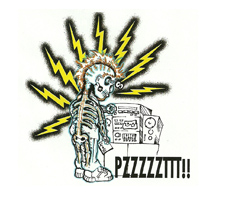Based on my years of helping customers solve interfacing problems of all sorts, connecting unbalanced outputs to balanced inputs, and vice-versa, certainly ranks among the most common and confusing of tasks for system integrators.
Basically, two issues must be dealt with. The first involves the different signal operating levels between unbalanced (consumer) and balanced (professional) equipment. The second involves making the actual connections to transfer the signal while avoiding “ground loop” noise problems.
Signal operating and reference levels are significantly different for consumer and professional equipment. The consumer reference level is -10 dBV or 316 mV rms, while the pro reference is +4 dBu or 1.228 V rrns. Therefore, a voltage gain (for consumer outputs driving pro inputs) or loss (for pro outputs driving consumer inputs) of 3.9 or about 12 dB is theoretically required.
On the consumer to pro side, a fair question might be “Why not use a step-up transformer for this gain?” Several commercial products do, but I don’t recommend them. Let me explain. Transformers simply reflect impedances from one winding to another – they do not have an intrinsic impedance of their own. Assume we use a transformer with a turns (voltage) ratio of 1:4 to get 12 dB of gain. This unavoidably (laws of physics) makes the transformer’s impedance ratio 1:16, the square of its turns ratio.
Therefore, the impedance of the pro input will be reflected back to the consumer output as 1/16 of that. Since a typical balanced Input has an impedance somewhere between 10 kiloohms (kohms) and 40 kohms, it will be seen by the driving consumer output as 625 ohms to 2.5 kohms. Virtually all consumer outputs are rated to drive a “10 kohms minimum load.” That’s because their internal or “output” impedance (usually unspecified) is typically 1 kohm or more.
Therefore, actual gain will not be 12 dB but only 3 to 8 dB because of the low load impedance on the consumer output. Worse yet, the consumer output will experience a serious headroom loss, up to 8 dB, causing premature clipping. Since most consumer outputs use coupling capacitors designed for a “10-kohm minimum load,” the severe loading will usually result in poor bass response, too.
Usually, specs relating to these issues are conspicuously absent from manufacturers’ data sheets. However, gain is seldom an important issue because pro equipment inputs generally have at least 12 dB of additional gain “reach.” If we eliminate the signal gain requirement, unbalanced to balanced interfaces become fairly straightforward,















